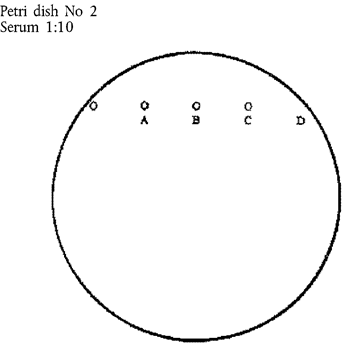THE EUROPEAN COMMISSION,
Having regard to the Treaty on the Functioning of the European Union,
Having regard to Council Directive 64/432/EEC of 26 June 1964 on animal health problems affecting intra-Community trade in bovine animals and swine(), and in particular the second paragraph of Article 16 thereof,
Whereas:
(1) Directive 64/432/EEC applies to intra-Union trade in bovine animals and Chapter II of Annex D thereto sets out the diagnostic tests for enzootic bovine leukosis (EBL) to be used for the control and eradication of that disease and for surveillance and monitoring, as well as for the establishment and maintenance of an officially enzootic-bovine-leukosis–free herd status and certification required for intra-Union trade in bovine animals.
(2) Chapter II of Annex D to Directive 64/432/EEC provides that tests for EBL are to be carried out by either agar gel immune-diffusion test (AGID) with the use of antigen standardised against the official EC standard serum (EI serum), or by the enzyme-linked immunosorbent assay (ELISA) standardised against E4 serum. Both standard sera are supplied by the National Veterinary Institute, Technical University of Denmark.
(3) A new EBL standard serum (E05 serum) has recently been developed by the World Organisation for Animal Health (OIE) Reference Laboratory for Enzootic Bovine Leukosis in Germany (Friedrich-Loeffler-Institute) in cooperation with the OIE Reference Laboratories in the United Kingdom (Veterinary Laboratories Agency) and in Poland (National Veterinary Research Institute) after being tested in a ring trial between those laboratories. The E05 serum has been validated against the EI and E4 sera by different AGID and ELISAs and consequently included as an accredited OIE standard serum in Section B(2) of Chapter 2.4.11 of the OIE Manual of Diagnostic Tests and Vaccines for Terrestrial Animals, Sixth Edition, 2008. This serum is available from the OIE Reference Laboratory for enzootic bovine leukosis in Germany.
(4) In addition, the National Veterinary Institute, Technical University of Denmark has informed the Commission that it is no longer able to fulfil its obligations for the supply of the standard sera currently provided for in Chapter II of Annex D to Directive 64/432/EEC.
(5) The German competent authorities and the Friedrich-Loeffler-Institute have agreed to be a supplier of the E05 serum which shall consequently become the new official European Union (EU) standard serum for EBL.
(6) Directive 64/432/EEC should therefore be amended accordingly.
(7) The measures provided for in this Decision are in accordance with the opinion of the Standing Committee of the Food Chain and Animal Health,
HAS ADOPTED THIS DECISION:






